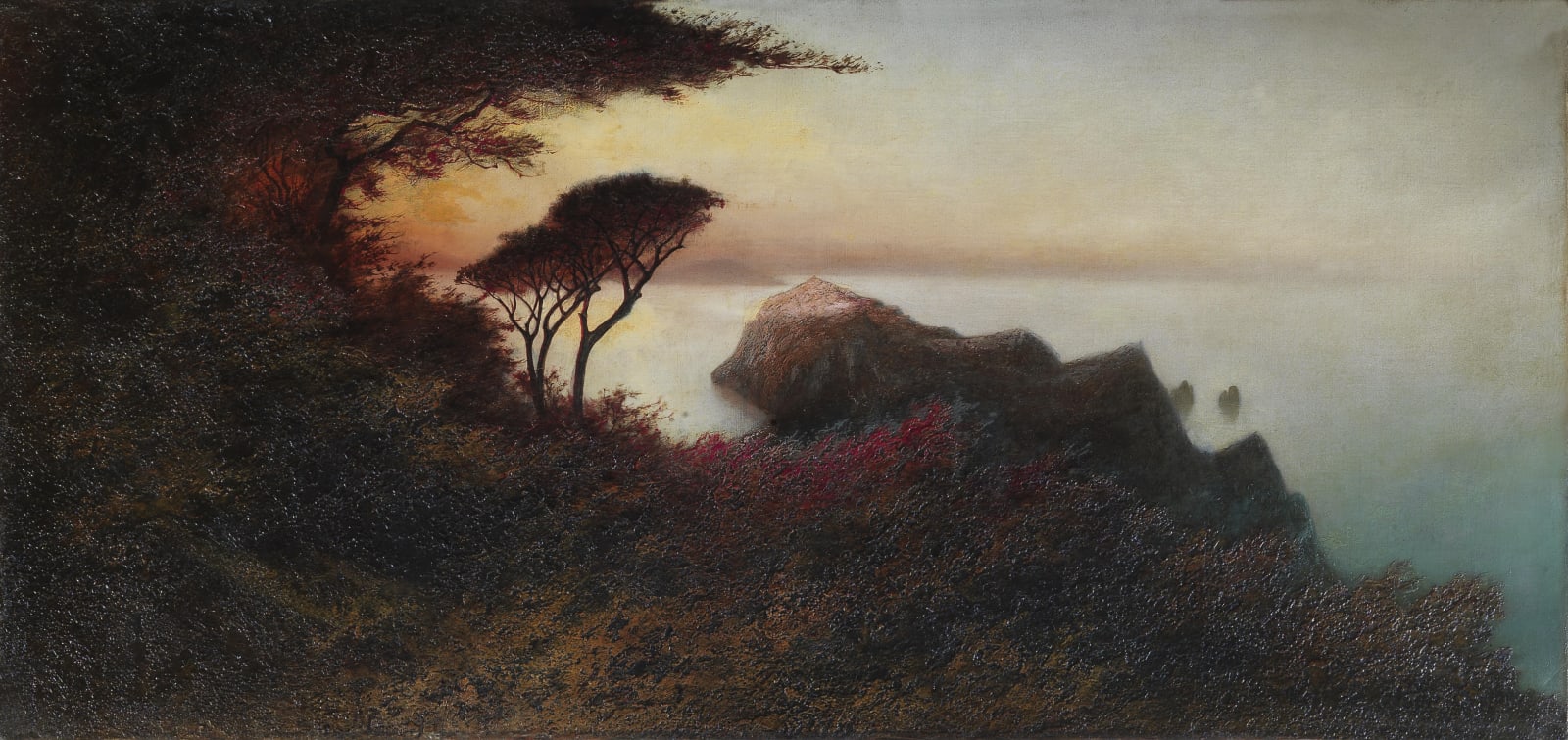Karl Wilhelm DIEFENBACH German, 1851-1913
This unpublished work represents an important entry in the German artist’s catalogue of the views of the Island of Capri.
The island is depicted from the top of the Monte Solaro: beyond a few bramble bushes and two maritime pines in the foreground, it is possible to distinguish the soaring Monte di Tiberio, the Castiglione and the two Faraglioni, while in the distance it is possible to notice the promontory of the Punta Campanella on the coast. All of this nature seems to emerge from a placid and milky sea.
This highly ‘material’ painting conveys a profound sense of placidity – highly unusual for Diefenbach’s views – in which the island is usually depicted in ‘nocturnal’ settings inserted in what can be considered a restless atmosphere.
The Island of Capri represented for Diefenbach an inexhaustible source of inspiration as well as a home during the last years of his life. In the canvases inspired from the island, the artist expresses his own art «always based on the life of feelings and on the man-nature relationship, individual solitude and communion with the universe».[1]
Born in Hadamar, a town of Hesse, Karl Wilhelm Diefenbach in the fall of 1872 moved to Monaco of Bavaria to enter the Academy of Art in the city. This was the period in which the painter was inspired by the movement of the "Sturm und Drang", spread to most of Germany; the encounter with many intellectuals dedicated to the worship of nature and the research in the field of folklore soon led him to leave the aristocratic environment where he spent several months between 1873 and 1874 employed by the Duke of Nassau.
Following a period of illness that led him to a careful reflection on his life, he devoted himself, including by means of painting, to the preaching of universal peace and the return to nature; the speech "On the origins of human misery" caused him to a term of imprisonment followed by a smear campaign supported by the authorities of the time.
The painter, in order to escape the intolerable climate that was created and to continue its activities in full freedom, decided to move to Höllriegelsgereut, where in 1887 he met the German painter Hugo Höppener said Fidus (1868-1948) who became his devoted student. Despite the continued persecution Diefenbach, supported by a wide array of intellectuals, had the opportunity to exhibit their work in 1889 and in 1891 in the city of Monaco with a great success.
Summoned to court by the Emperor Franz Joseph in 1892 the painter came to Vienna, a city which soon leaved because not accepted by the authorities due to its unconventional character, settling at first in the vicinity of Cairo and finally in Capri where he had a renowned studio, frequented by intellectuals and artists from the island.
[1] A. Basilico Pisaturo, Un artista visionario, in «Karl Wilhelm Diefenbach 1851 - 1913. Dipinti da collezioni private», catalogue by G. Alisio, Capri, Certosa di San Giacomo, 21 July - 30 September 1995, Naples 1995, p. 11.
JOIN OUR MAILING LIST
Subscribe to our mailing list in order to receive news on new acquisitions, exhibitions, special previews and more!
* denotes required fields
We will process the personal data you have supplied to communicate with you in accordance with our Privacy Policy. You can unsubscribe or change your preferences at any time by clicking the link in our emails.
